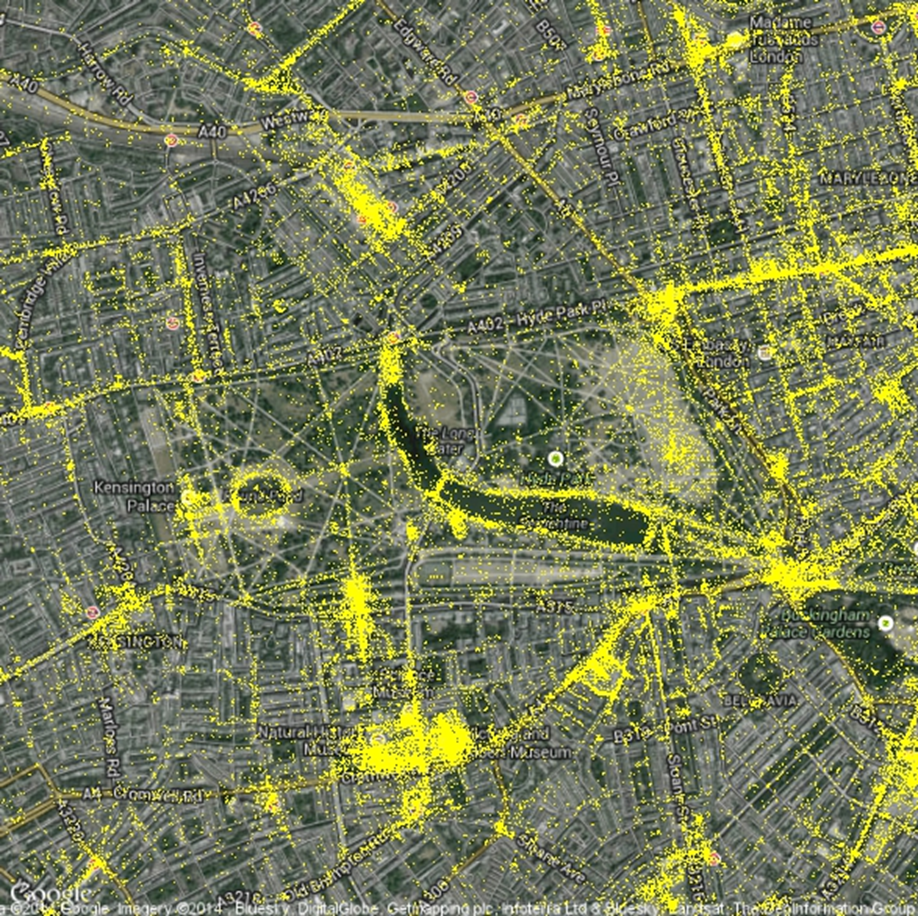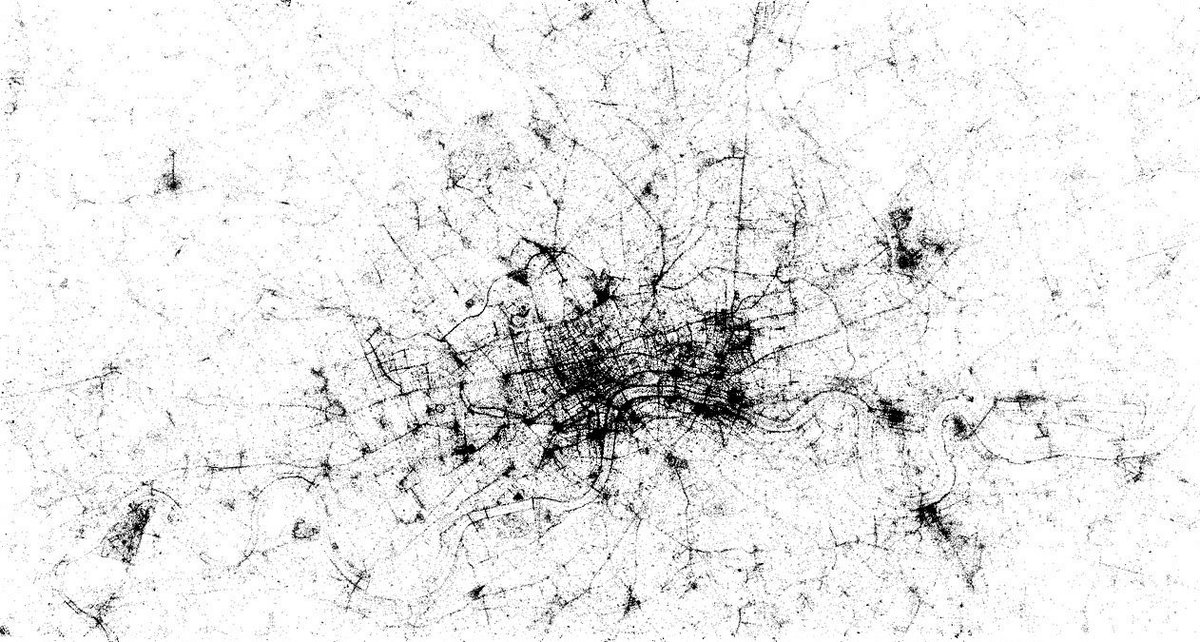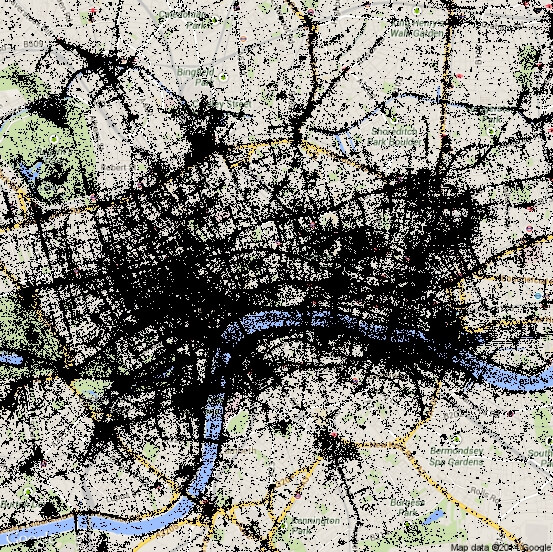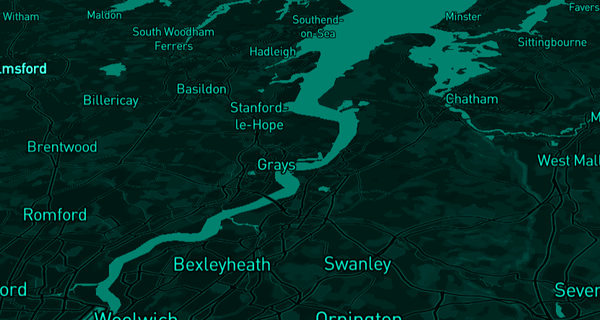
The virtual and the physical: The growth of social media data on places, and its implications
Geotagged Flickr photography in and around Hyde Park in London. Sights with visibly high levels of activity include the Serpentine, the museums in Exhibition Road. Image John Davies Into the city In the past, people walked the streets and left no trace. This is no longer true. We are creating large amounts of data about the places around us: how we move through them, and how they move us. One source of this data has been the growth in smart phone and social media use....



